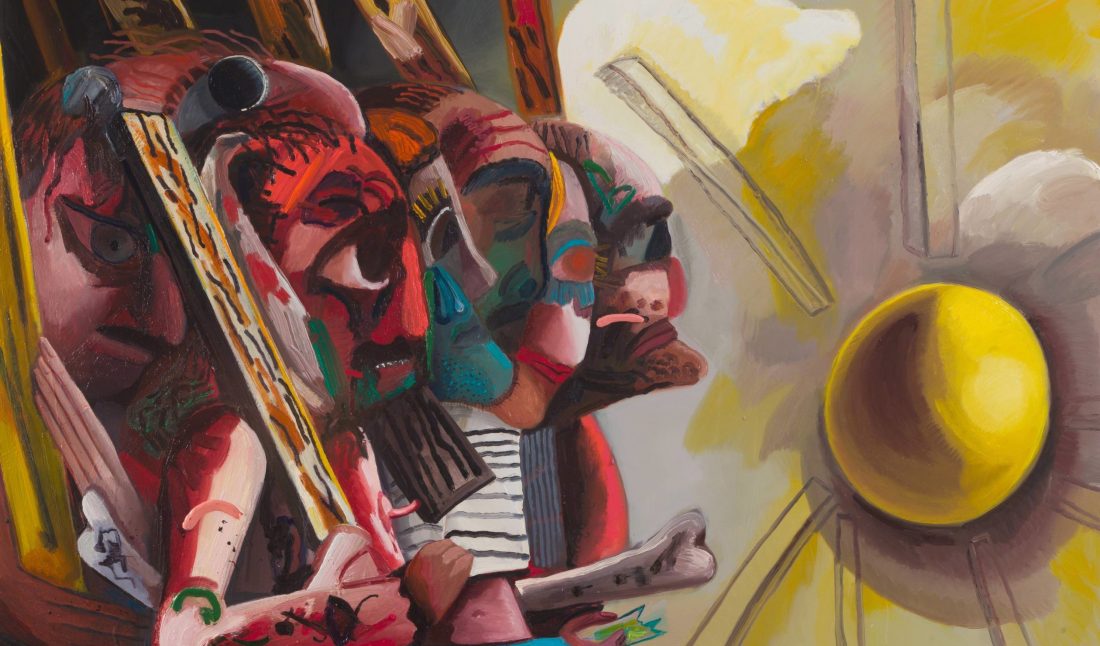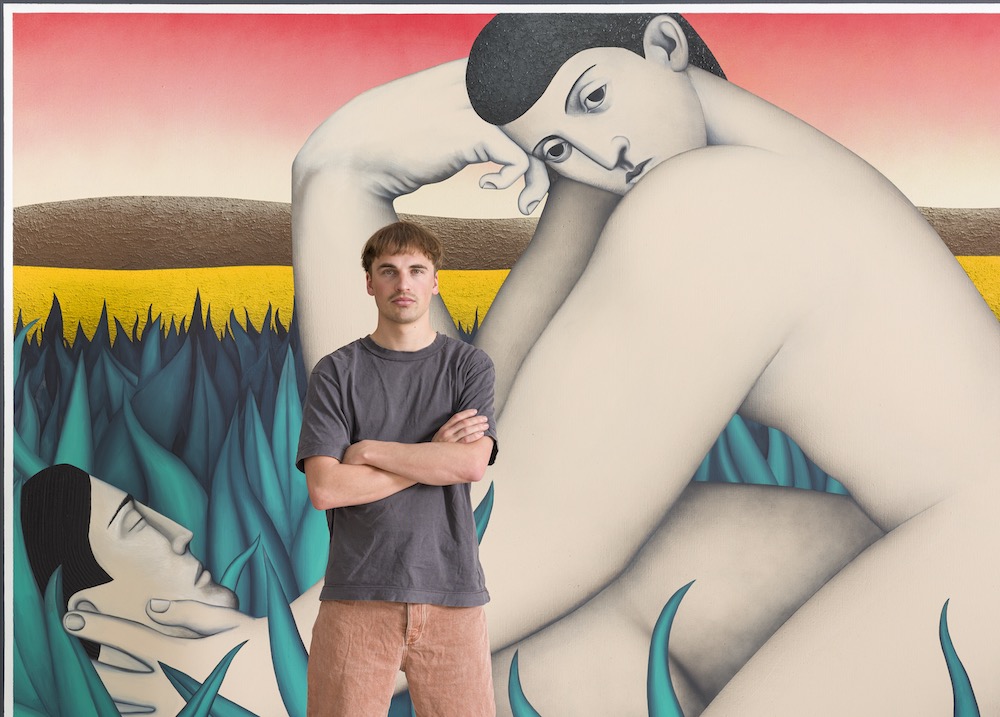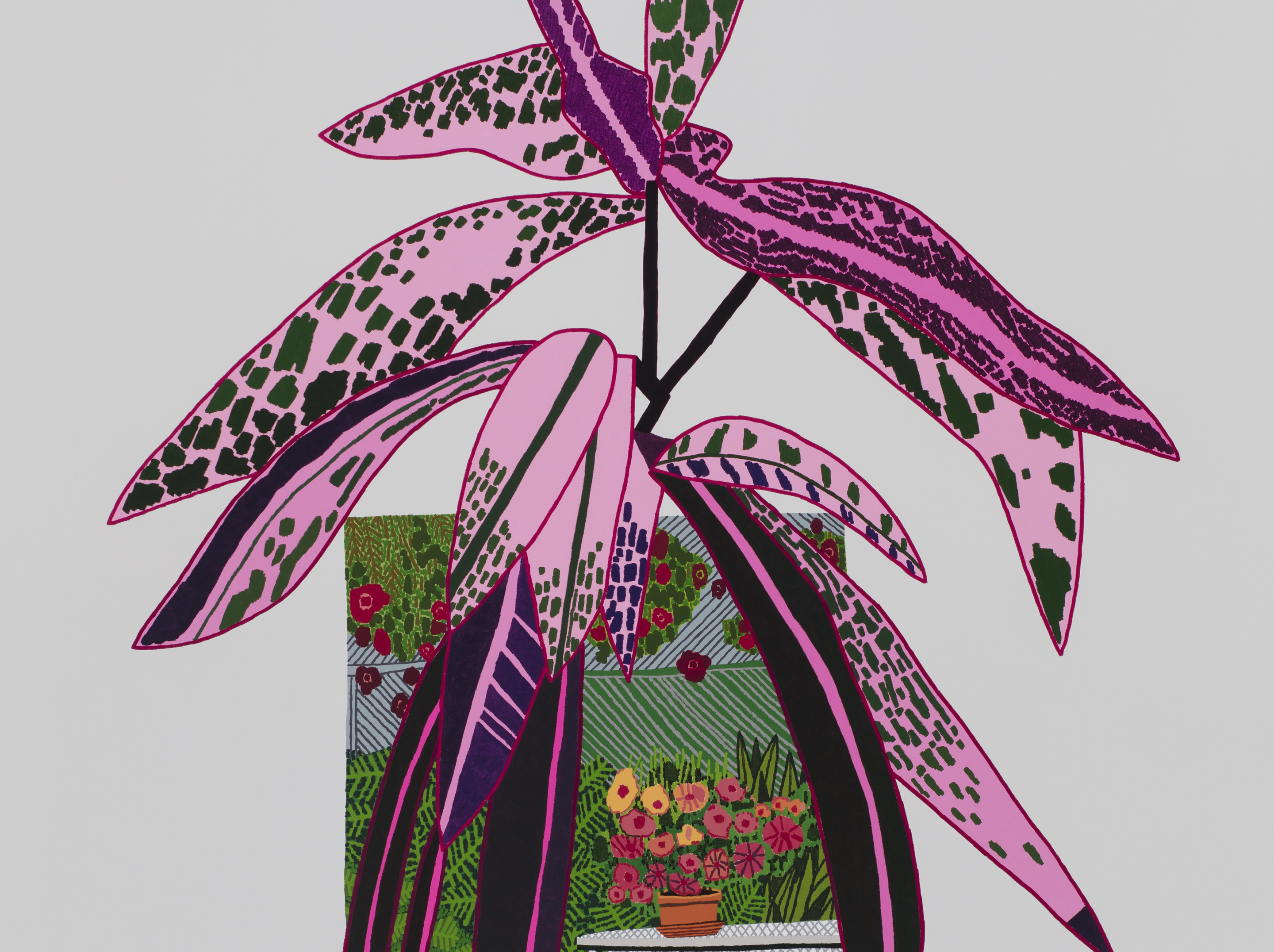On October 27, Dana Schutz will be celebrated as the 2018 honoree artist for the 20th TWO x TWO for AIDS and Art gala in Dallas. Hosted by collectors Howard and Cindy Rachofsky, the benefit has raised $75 million to date for amfAR and the Dallas Museum of Art.
Over the summer, Whitewall visited Schutz in her Brooklyn studio, where she was working on her painting for the occasion. Her show at the Transformer Station in Cleveland, “Eating Atom Bombs,” had recently closed. Capturing the feeling of the post–2016 election environment, the dystopic scenes in the paintings were aimed at how we can put things back together.
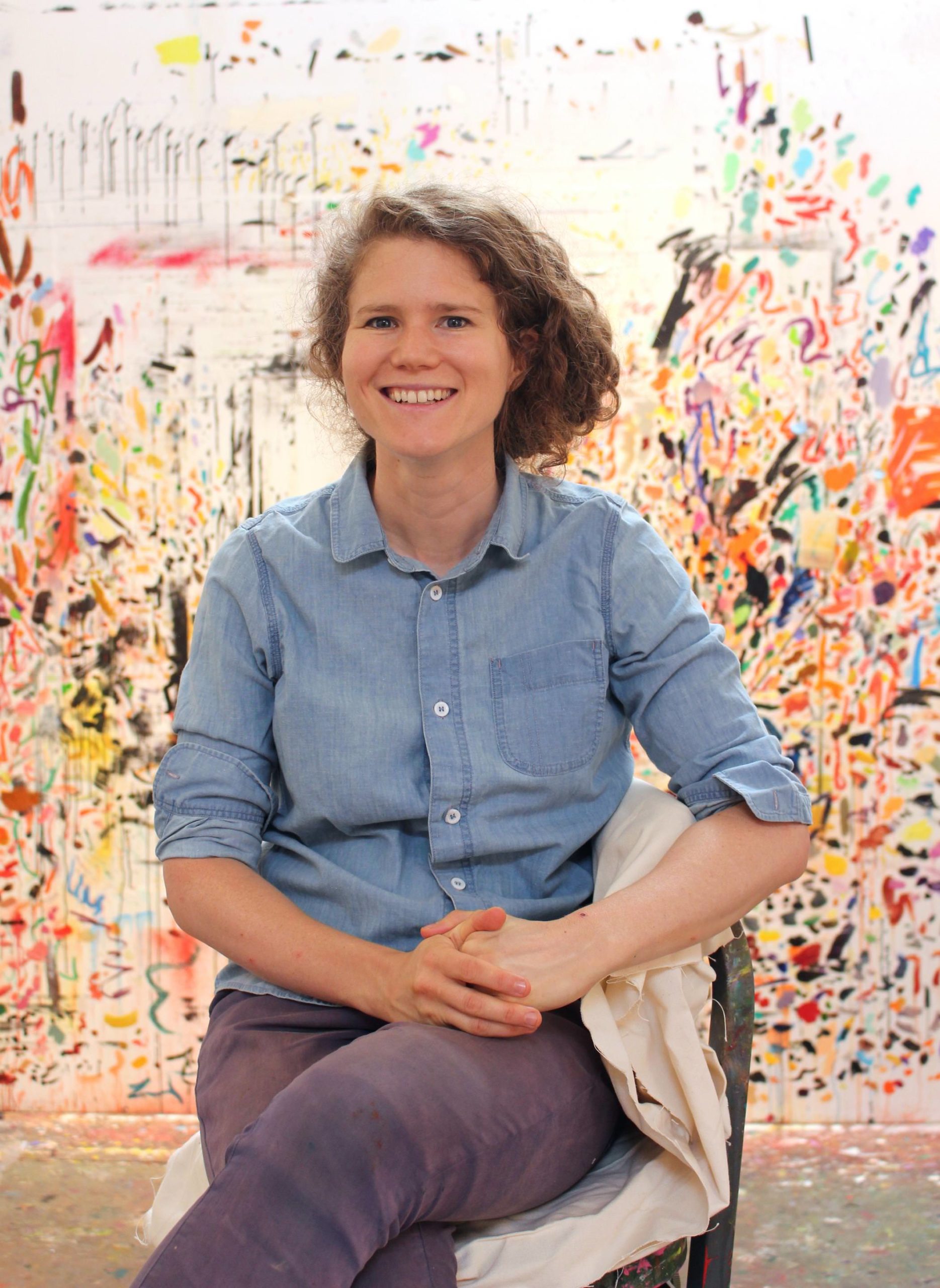
Schutz is known for her somewhat abstract works that are full of action, color, volume, and crowds. She wanted her more recent work to feel less chaotic, focused on just one or two figures.
We spoke with Schutz about what she’s working on now and what we can expect from her show early next year at Petzel Gallery in New York.
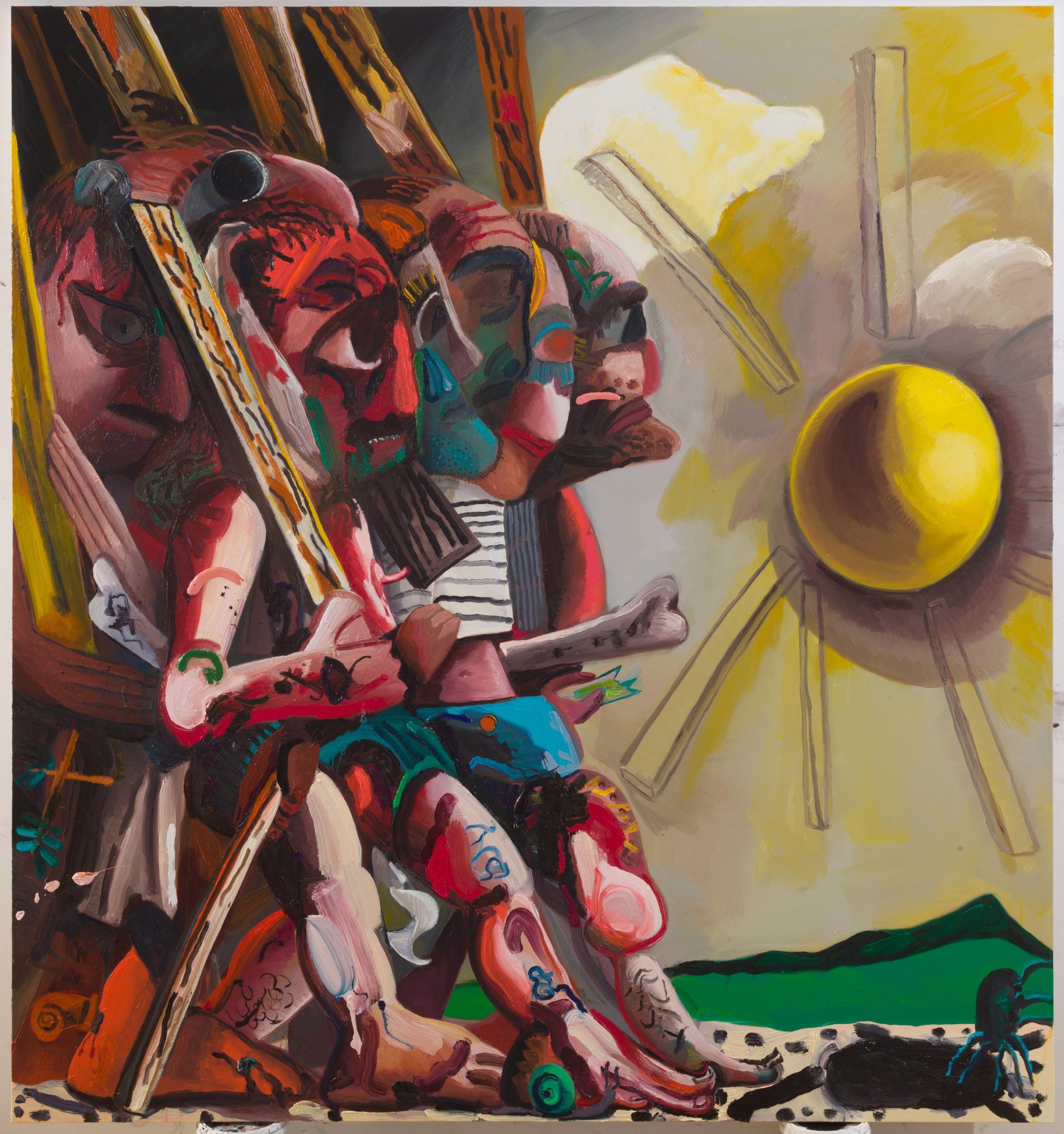 Dana Schutz
Dana SchutzBeat Out the Sun
2018
Oil on canvas
94 x 87.5 inches
Courtesy of the artist and Petzel Gallery
WHITEWALL: Congratulations on being the 2018 honoree of TWO x TWO. Have you been involved with the event previously?
DANA SCHUTZ: I have. In 2012 I donated a piece.
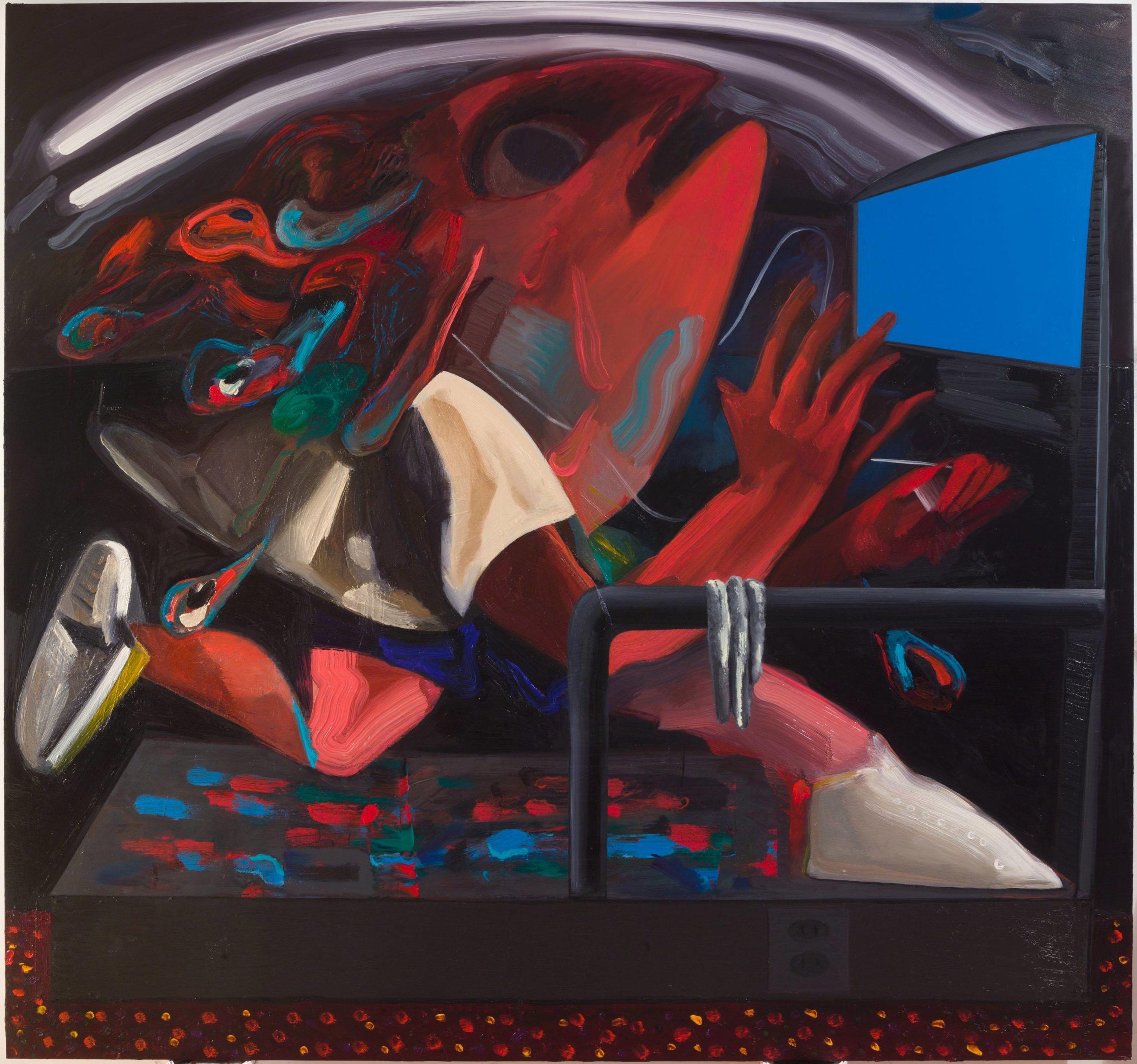 Dana Schutz
Dana SchutzTreadmill
2018
Oil on canvas
90 x 96 inches
Courtesy of the artist and Petzel Gallery
WW: How did they approach you about being this year’s honoree?
DS: I got a call. TWO x TWO is an incredible event. It raises so much money for amfAR and supporting the arts. It is an honor to be able to help this year.
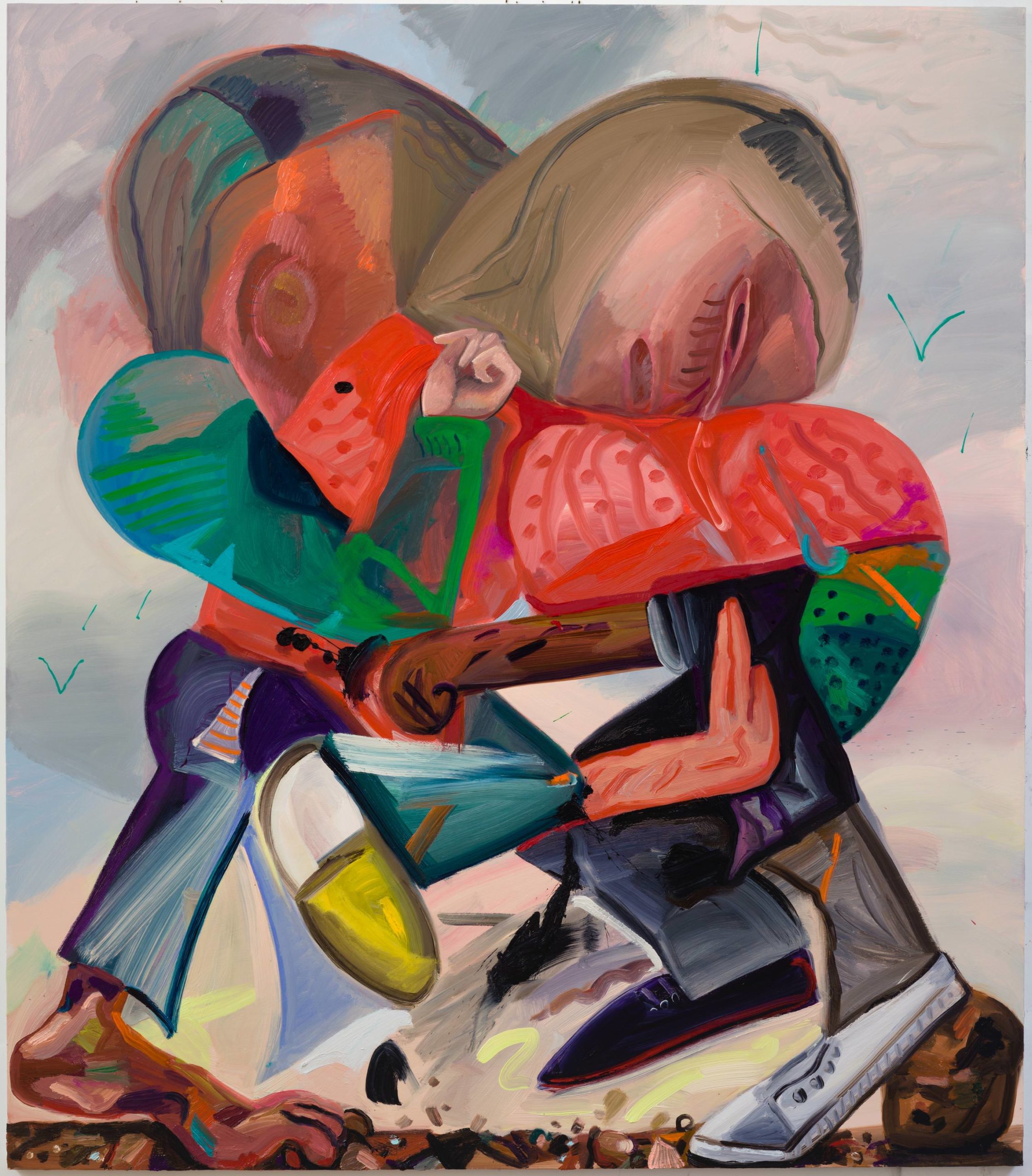 Dana Schutz
Dana SchutzConflict
2017
Oil on canvas
94 x 82 inches
Courtesy of the artist and Petzel Gallery
WW: What kind of work do you think you’ll create for the event?
DS: I have a couple ideas of what to do, but I’m just about to start them. I was thinking of maybe a woman on a treadmill or a group of people coming to beat out the sun, but when they finally approach, it just hovers in front of them, casting its own shadow.
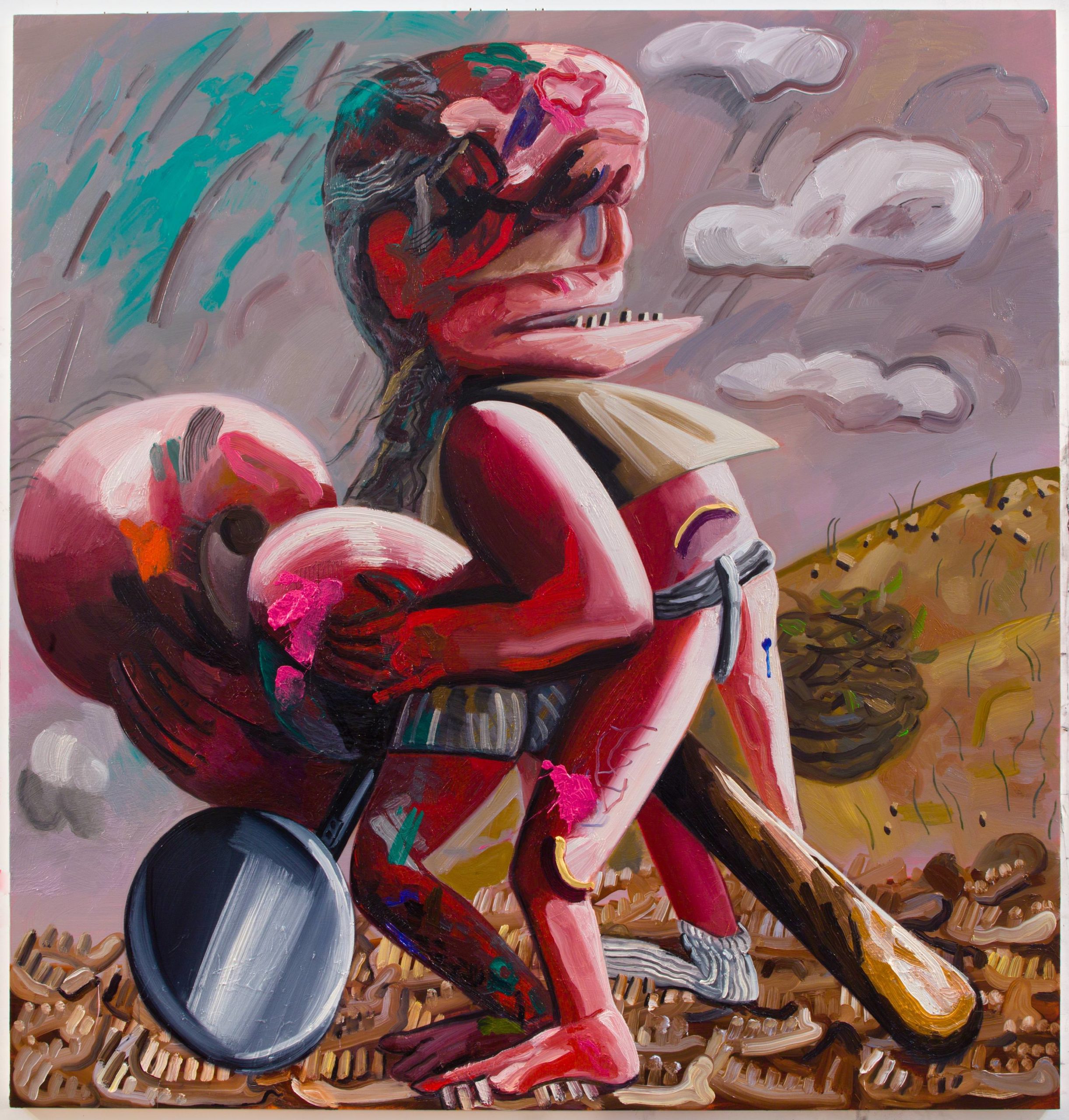 Dana Schutz
Dana SchutzStrangers
2018
Oil on canvas
84 x 88 inches
Courtesy of the artist and Petzel Gallery
WW: What else are you working on this summer in the studio?
DS: I’m working toward a show in January and just sorting it out. I just had a show in Cleveland, and it closed at the end of April. It was at the Transformer Station. It was mostly recent paintings from 2016 to 2017.
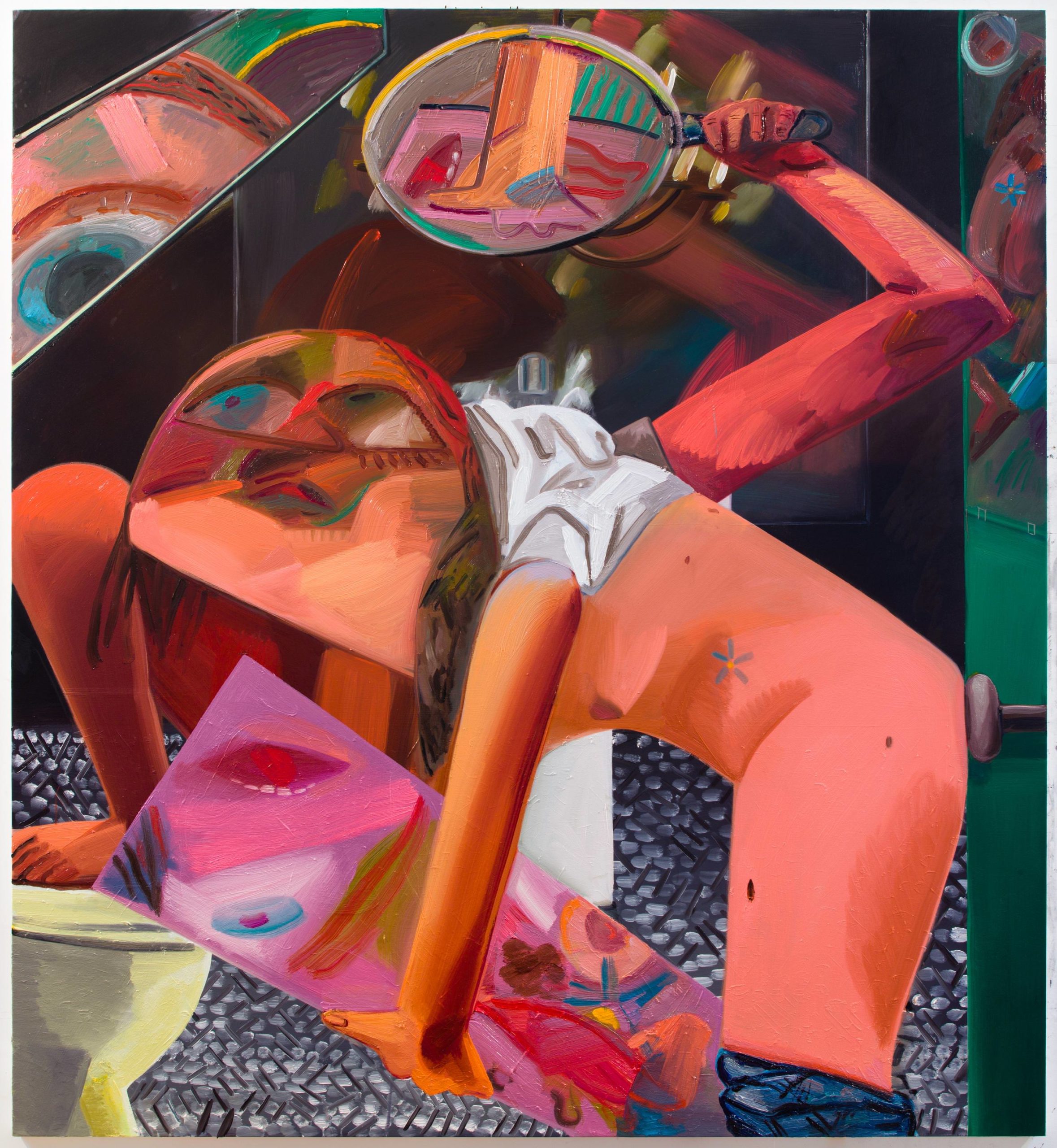 Dana Schutz
Dana SchutzSelf-Exam
2017
Oil on canvas
91 x 84 inches
Courtesy of the artist and Petzel Gallery
WW: I was just looking at those works online, and there’s a lot of energy and action in them. Can you tell me about the feeling those came out of?
DS: I wanted to not depict this time, but what this time feels like. I definitely wanted the paintings to have more space and to not be as chaotic as earlier work. I was really thinking about where the situations could be taking place and thinking a lot about landscape and wanting the subjects to be more voluminous.
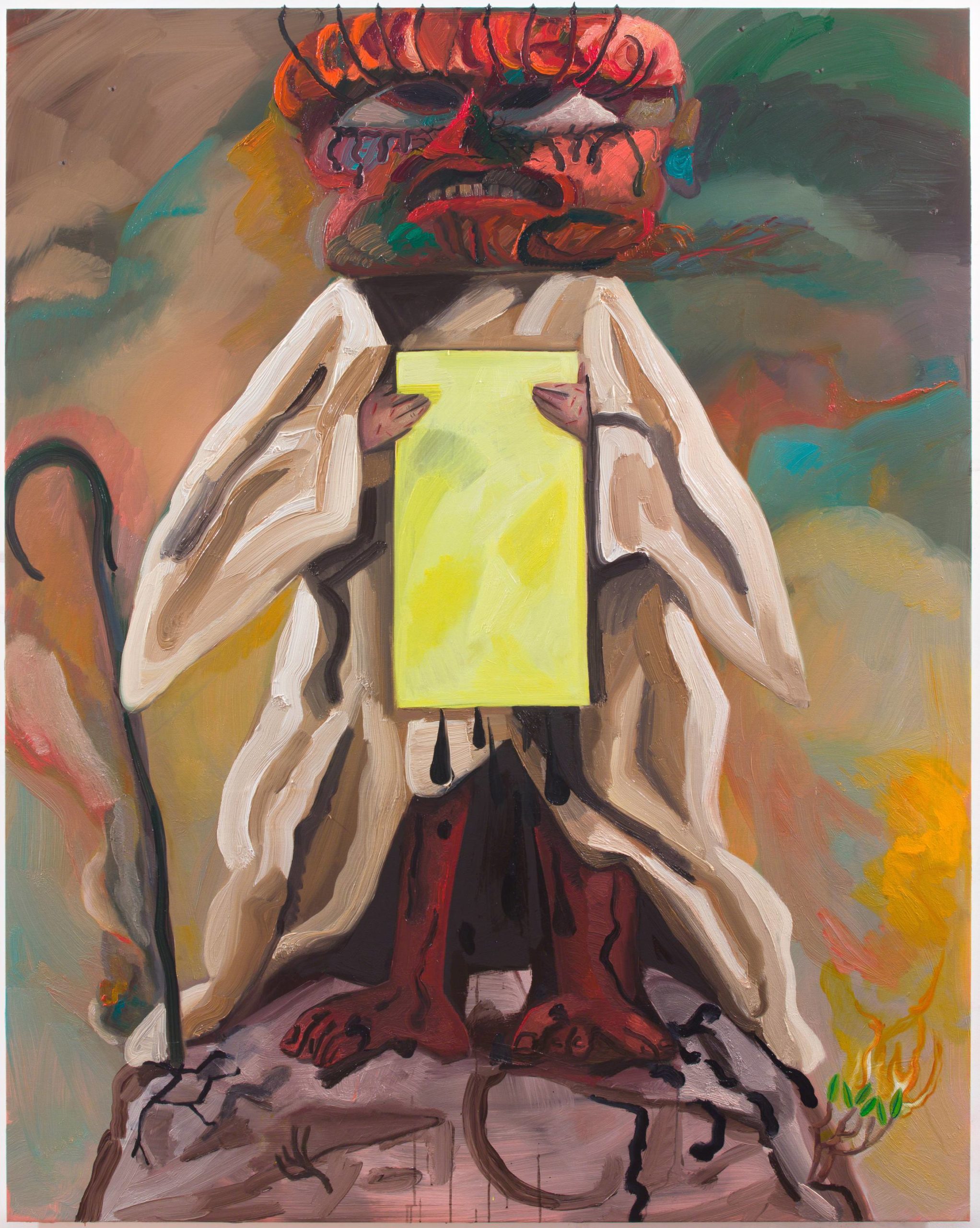 Dana Schutz
Dana SchutzStatement
2018
Oil on canvas
88 x 70 inches
Courtesy of the artist and Petzel Gallery
WW: How do you make something less chaotic?
DS: I was thinking about if the situation could be simpler; like two people walking, perhaps leaving the scene. But I’m still interested in these group scenes. The tension between the individual and the group—there will be a group, but they’re all kind of dysfunctional or working only as individuals. Or an individual, but it’s a metaphor for a larger situation. The show had that, too. I think there was a lot of conflict in that show.
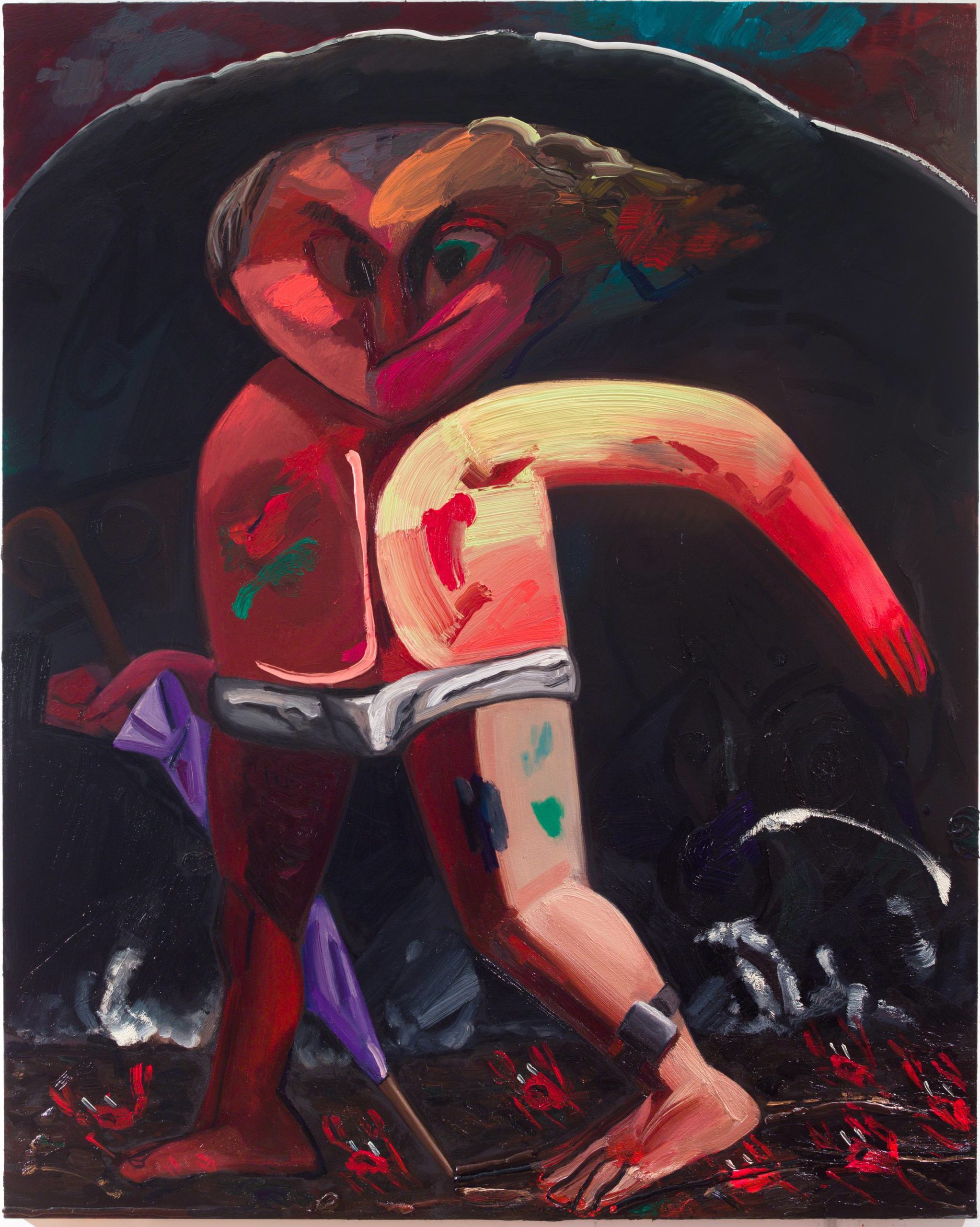 Dana Schutz
Dana SchutzThe Wanderer
2018
Oil on canvas
90 x 72 inches
Courtesy of the artist and Petzel Gallery
When I was making those paintings, I was thinking of a space that was after everything. Not like the end of the world, but more after. How do people begin to put things back together? Or maybe there’s nothing to put back together and people are just out there roaming through it. But thinking, “Where are they?” I thought if the ground was covered in jawbones—that sort of resembled one of the protagonists in the painting. I don’t know if they were previously at war with each other, but they were exiting the scene together. The feeling of walking on jawbones felt interesting—almost like walking over teeth. It felt very visceral, walking over chattering teeth or chatter and speech.
WW: So after a show of all-new work, what is it like to be back in the studio? What are you working on next?
DS: I just started the woman on a treadmill. Those are supposed to be fluorescent lights and she’s sweating. The sweat drops may have reflections and images. She’s running, but the video screen would be blank, casting that digital blue.
WW: Do you normally have sketches before starting a piece?
DS: Yeah, I’ll roughly work it out on a piece of paper that is the same format as a canvas just to try to figure out the idea. The drawings are preparatory, trying to figure out the structure of the picture, what kind of space the subjects should occupy and the format of the canvas.
I used to make paintings where I would paint the whole space and then begin to put figures into it. I feel like I’m going back to that—wanting the surfaces to have more history to them, layers, where the surfaces are more dense.
I’ll have an idea and work out how it can occupy the space. Then things can change in the painting, but the general structure will be there from the beginning.
WW: When changes happen, is it like, “This isn’t working in the space?”
DS: Yeah. I’ll feel like something is really noisy or irritating in the painting. If your eye keeps going to it, then it should go. Painting is dynamic, so you’re always responding to what is happening on the canvas. You don’t really know where it’s going to land.
WW: Do you work from beginning to end on one piece, or do you move around?
DS: Just on one piece. I think it’s easier for me because I can get involved with the problems of that painting. Sometimes I envy painters who can go from one painting to the next. I can’t. It’s too much—too dissonant.
Sometimes a painting could sit aside for a bit and you realize that you really want to change something afterward. But for the most part, I usually paint them until they’re done.
WW: Do you know where this will go yet—the treadmill painting?
DS: Hopefully, at my Petzel show this January or TWO x TWO. But yeah, all the paintings I’m working on now are for the show in January.
I was thinking about trying to make sculpture, but I haven’t made them yet, so I don’t know what that’s going to be like.
WW: Have you made sculpture yet?
DS: Really bad sculpture, when I was in undergrad. It was very bad [laughs].
WW: What was it made out of?
DS: It was horrible. It was made out of heavy, wet plaster that somehow never cured and, inexplicably, clay that I would then paint on top of and then it would crack. They weren’t that bad for a 19-year-old, but some of them were really bad. Some of them included human hair.
They just ended up at my parents’ house, moody and grotesque. My parents would dress them up seasonally. They made really good Halloween decorations, but my parents would keep it going—Thanksgiving, Christmas, Easter, Fourth of July . . .
WW: That’s a riot!
DS: I really hope these next sculptures won’t be like that. No . . . maybe they’ll be exactly like that! Really depressing sculpture dressed seasonally. That’s a good idea! That does sound like a good show.
WW: [Laughs] What makes you want to make sculpture now?
DS: When you do something in another medium, it informs your painting, and I want the subjects to feel more voluminous.
I’ve always had a reality issue with sculpture that I don’t have with painting. Painting always had this kind of double reality where it could be a picture but it’s also a painting itself. Whereas sculpture is so actual. I feel less hung up on that now.
WW: I guess with an image you’re trained to think imaginatively—to imagine the world that’s there and create a world that doesn’t exist as easily as when sculpture is in your physical space.
DS: Yes, there is gravity and the illusion is so tied to the object. My husband is a sculptor, and he is interested in a sculpture’s potential to make the space around it. Instead of going inward, it goes outward.
WW: Your paintings do feel like they have a lot of volume to them.
DS: The surface of the painting can have its own properties that are almost independent of the image, and at times coalesce with the image.
WW: Looking at the treadmill painting, it feels a bit dark. Is there a mood to this next group of paintings?
DS: Maybe, but that is not my initial aim. You just think about the situation in the painting. But when someone walks into your studio, all of a sudden you can see, this is so depressing!
But with this one I was thinking more about the kind of silent pulse in your head when you’re running, or how to paint someone falling into themself. Almost like a mental flatlining as it just runs and runs. I wanted it to feel really slow. I guess it’s a mood. But it’s more of a subject.
That’s the thing with painting. There’s the subject, but then there’s really the subject—which is something that’s not quite the name of a thing, but something that’s in between . . . really how something is done.
You can see this when two artists paint the same subject. I am thinking of the difference between Ruben’s Saturn Devouring His Son and Goya’s. One is a painting of a man eating a baby and the other is a painting of pure fear.
WW: You’ve talked before about how painting for you is trying to find a problem for yourself. What do you mean?
DS: Sometimes there are good problems and sometimes there are bad problems. The good problems are, I think, generative. They lead to more questions.
I’m interested in trying to depict something that is not quite tied to image, but more of a feeling, process, or situation—something that I feel is possibly undepictable.
WW: Right. It’s more like, “I’m depicting or representing an abstract idea.” Do you feel like along the way you discover something?
DS: Yes, and sometimes the painting just fails. You don’t paint because you know; you paint because you don’t know.
And art is always changing. I just watched a Charles Ray lecture. He was talking about a sculpture at The Met and he called it a meaning machine. I thought that was beautiful. Every time you see it, it’s constantly making new and different meanings. It’s never the same and you’re never the same. It’s always changing, and that’s why it’s interesting.
This article appears in Whitewall‘s fall 2018 Couture Issue, out now.







